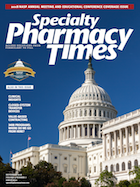Publication
Article
Specialty Pharmacy Times
The Era of Specialty: An Update on Current Industry Trends
Author(s):
In a presentation held at the 2018 National Association of Specialty Pharmacy Annual Meeting and Educational Conference, Doug Long, MBA, provided insight into the growth of specialty, citing several areas to watch over the next few years.
As specialty drug development and costs continue to dominate the market, several ongoing and emerging trends in the industry will likely have a significant impact. In a presentation held at the 2018 National Association of Specialty Pharmacy Annual Meeting and Educational Conference, Doug Long, MBA, provided insight into the growth of specialty, citing several areas to watch over the next few years.
INDUSTRY GROWTH
Specialty medicines continue to drive all spending growth in developed markets, as branded medicine spending falls. In 2017, specialty drugs accounted for one-third of the pharmacy industry’s total prescription dispensing revenues, according to the presentation. Currently, oncology, autoimmune, and HIV therapeutics lead absolute value growth among the top specialty therapy areas.
“We are truly in the era of specialty,” Long told the audience, noting that most drug launches have shifted to specialty. Of the 42 medicines approved last year, 21 had orphan designations, 19 were breakthrough therapies, and 2 were gene therapies. Looking ahead, Long noted that the late-stage pipeline remains robust with a focus on cancer and nervous system disorders, indicating that specialty drug growth will continue to trend upward.
MARKET ACCESS
Payer grip continues to tighten, as management across brands increases, according to the presentation. Managed care organizations and pharmacy benefit managers (PBMs) are increasingly using strict approaches to manage drugs, including the use of formulary exclusions, which continue to grow. Long also noted that access is now discussed in terms of “winning and losing” based on negotiations with major PBMs and payers.
Additionally, patients are facing increasing financial pressure, as payers are transferring higher percentages of costs to patients. According to Long, the average commercial co-pay increase from 2016 to 2017 was 14% and out-of-pocket health spending is projected to increase. Moving forward, addressing issues such as price transparency and value-based contracting will be key in improving access challenges.
INNOVATION
As digital health becomes more integrated with specialty pharmacy, the use of real-world data and evidence in clinical practice guided by the FDA will play a significant role, Long said. Additionally, telehealth and health app use is trending up; both can potentially address challenges, such as adherence, which affect patient care.
“If there is a shortage of doctors, telehealth is going to play a bigger role in the future,” Long said. According to Long, US telehealth visits are expected to grow between 4.2% and 7.5% from 2017 to 2022.
BIOSIMILARS
Currently, 14 biosimilars have been approved in the United States compared with 45 biosimilars approved by the European Union. Of these 14 biosimilars, only 4 have launched. “Support for biosimilars remains high, but uptake is met with challenges,” Long said in the presentation. Barriers to biosimilar uptake are multifaceted and include rebate practices and lifecycle management strategies by brand sponsors, confusing policy language, and stakeholder education and awareness. Long said that legislative action may be needed to overcome patent disputes that can delay product entry. Still, biosimilar use remains a potential strategy to lower drug costs, with the Trump administration in favor of legislation aimed at fostering more competition in the space.







